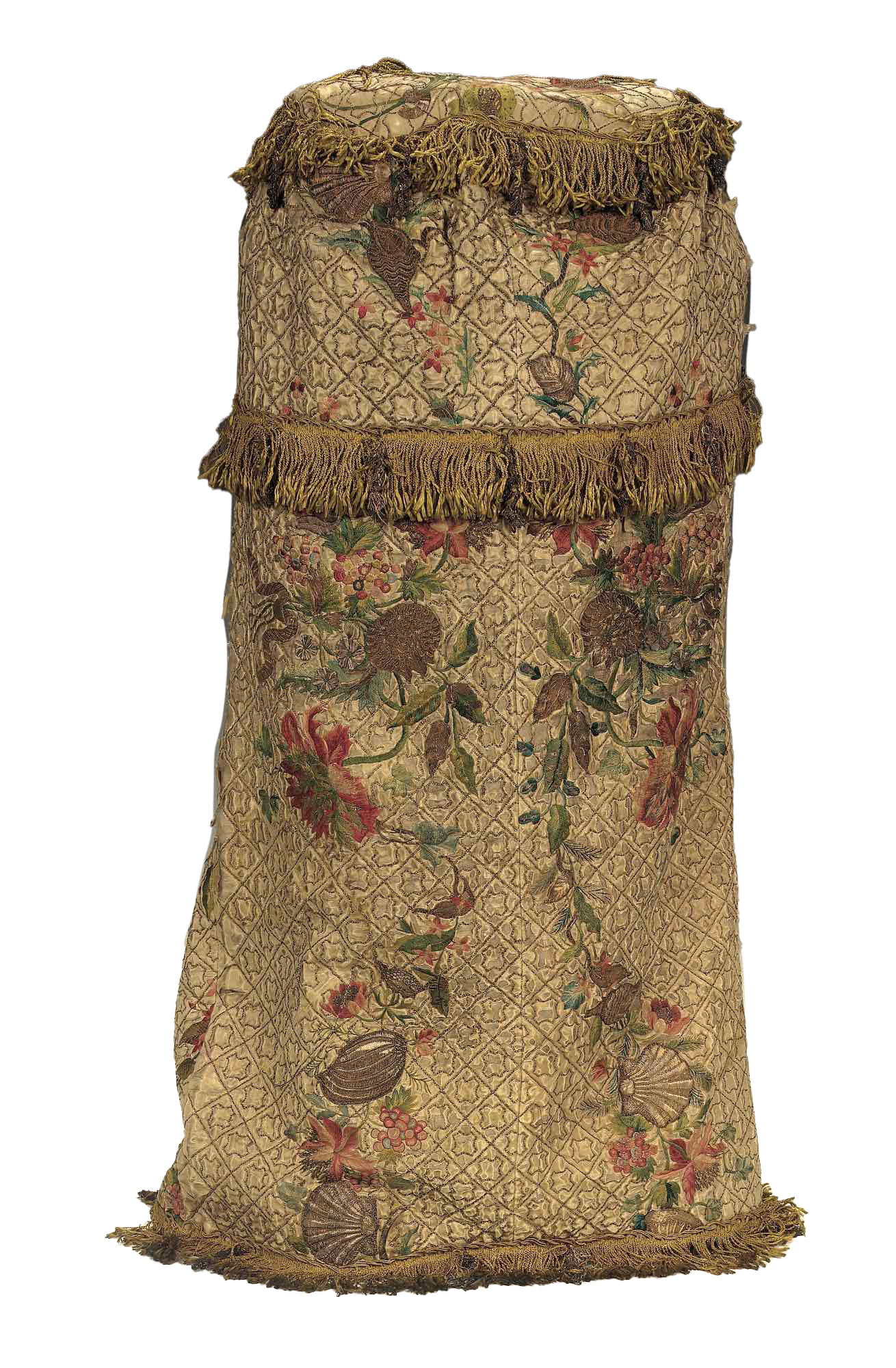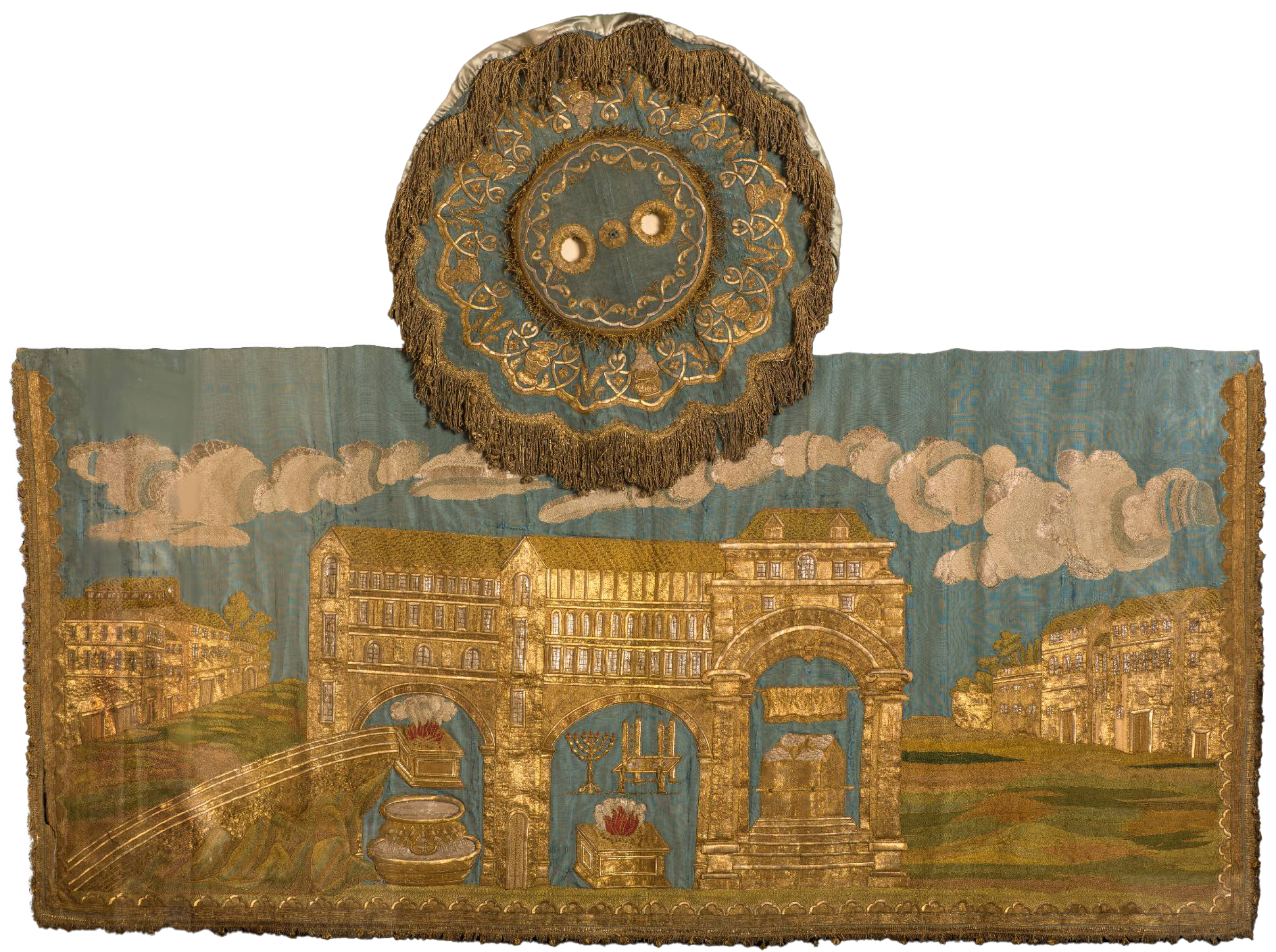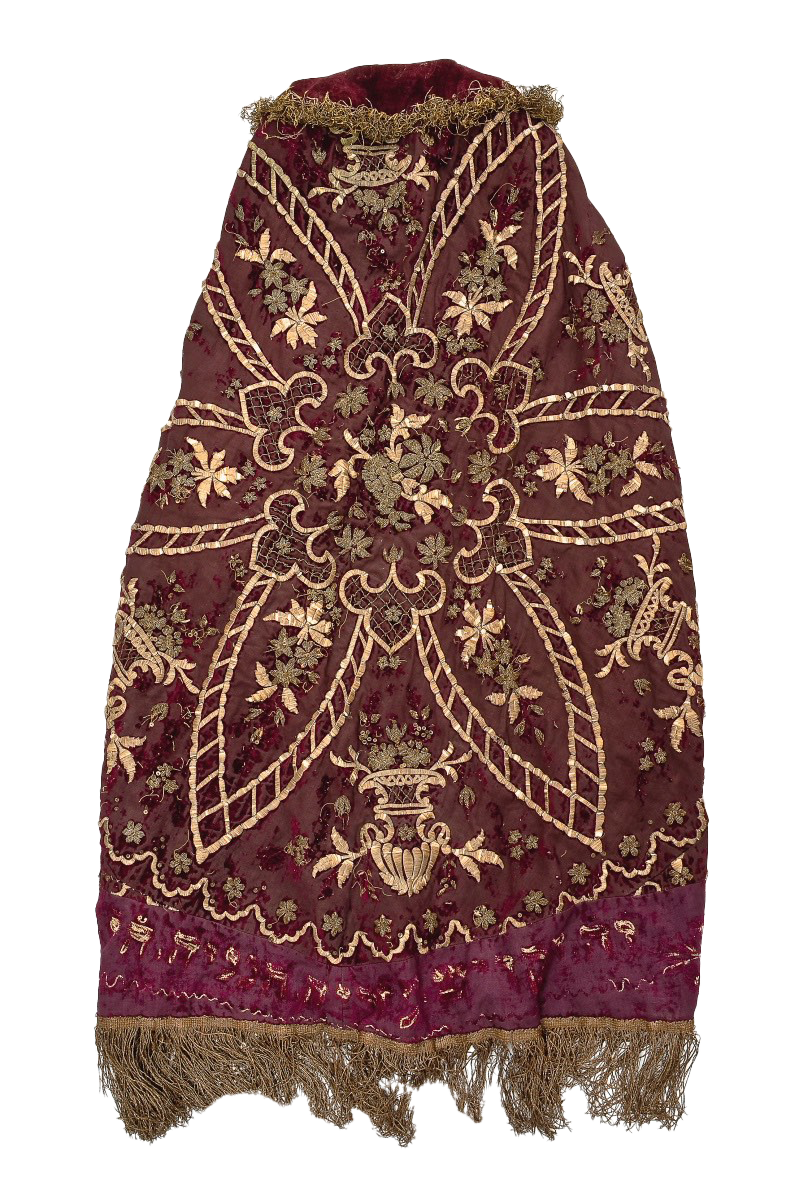(me'il, mappah)

A textile cover, often made of precious fabric and decorated, that protects the Torah scroll when not in use.






In some communities, such as the Sephardic and Romaniote communities, ceremonial textiles for the Torah were often known by the general term “mappah,” which makes it sometimes difficult to know which item is being alluded to, the wrapper, the binder or the mantle.
Creating mantles for Torah scrolls
Cohen, Julie-Marthe. “The Migration of Ceremonial Objects: The Case of the Amsterdam Portuguese Jewish Torah Mantle.” Studia Rosenthaliana, vol. 35, no. 2, Peeters Publishers, 2001, pp. 200–13.
Gomberg, Betsy, and Susan Schaalman Youdovin, editors. Judging the Book by Its Cover: Torah Coverings: The Philip & Sylvia Spertus Judaica Prize Competition. Chicago: Spertus Museum, 2000.
Kybalová, Ludmila, et al., editors. Textiles from Bohemian and Moravian Synagogues from the Collections of the Jewish Museum in Prague. Prague: Jewish Museum Prague /Prague Castle, 2003.
Makover-Assaf, Sharon, and Daisy Raccah-Dijvre. “The ‘Flowering Vase’ Torah Mantle from Morocco.” The Israel Museum Journal, vol. 11, 1993, pp. 73-80.
Swetschinski, Daniel M., et al. Orphan Objects: Facets of the Textiles Collection of the Joods Historisch Museum. Amsterdam: Joods Historisch Museum, 1997.
Yaniv, Bracha. “The Torah Mantle.” Ceremonial Synagogue Textiles: From Ashkenazi, Sephardi, and Italian Communities, Liverpool: Liverpool University Press, 2019, pp. 127-92.
Greenblatt, Rachel L. “Few Examples of Women’s Garments Turned into Sacred Objects have Survived Hundreds of Years.” Shared History Project, Leo Baeck Institute, 16 Mar. 2021.
Select a language